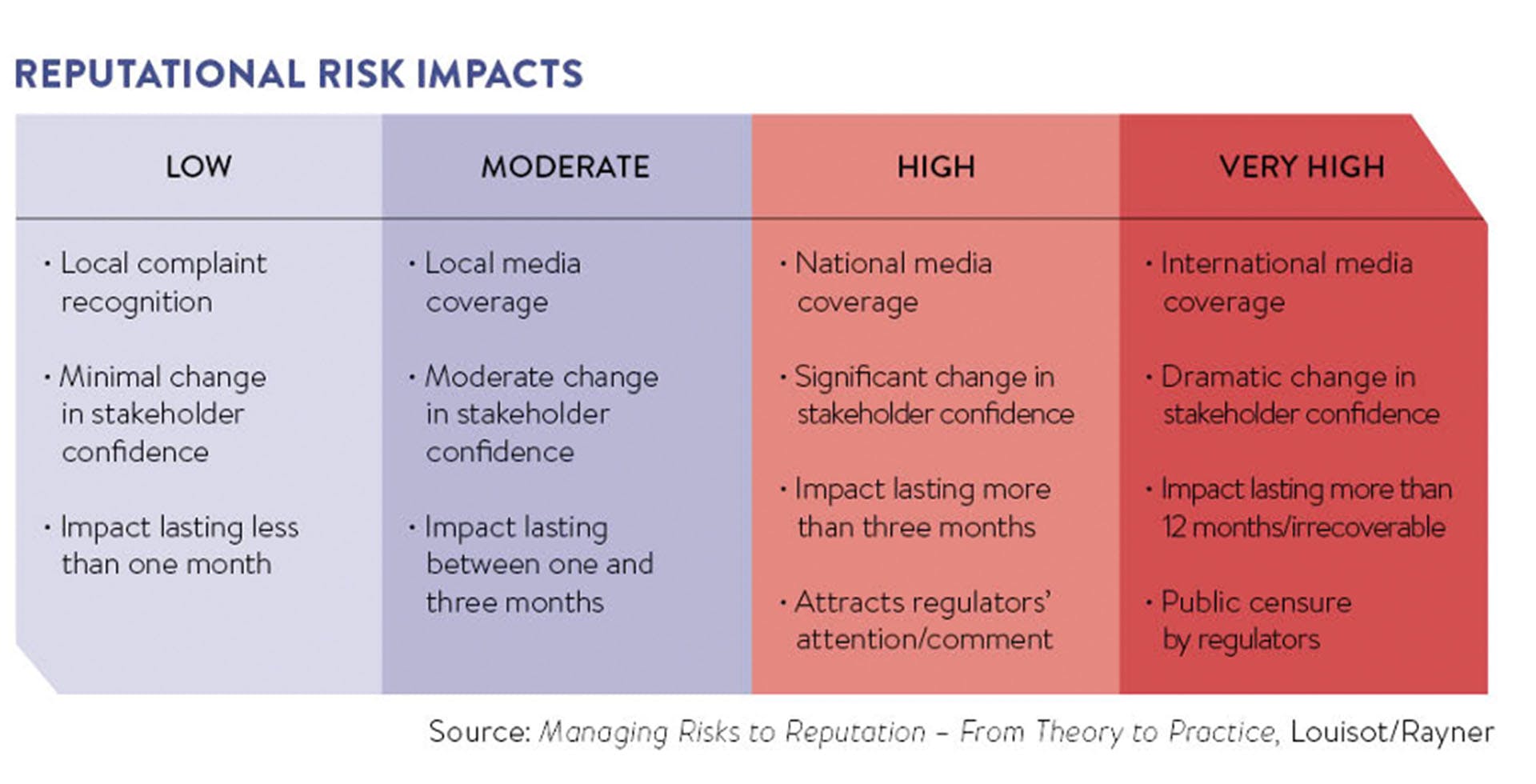
A brand’s online reputation means everything. It can help you charge a premium, differentiate from the competition, attract talent and win customers over during the purchase decision-making process. Considering the stakes, it’s therefore surprising to hear that under 50% of respondents from a PRNews study do not have updated reputation management plans in place.
We understand that managing, mitigating and resolving a crisis can be extremely challenging if you don’t know the steps involved. That’s why we put together a list of before, during and after crisis pointers, so if ever one did hit, your online reputation repair strategy will be that much more effective.
How to optimise your online reputation repair strategy
Calm before the storm: GOAL – Mitigate online reputation risks
The first step to online reputation repair is not waiting until you see a crisis coming to start planning.
Handling reputational threats that have already surfaced is crisis reputation management – a reactive approach that’s purpose is to limit the damage.
Online reputation repair is made easier by the speed it takes for you to respond. The faster you act the better. This is why it’s important to have governance models in place to mitigate risks in the first place.
Below you’ll find a few ways to help you become more proactive when managing reputational risk.
1. Analyse internal processes to spot potential weaknesses
No business can ever anticipate all situations or actions that could result in a crisis, but having an idea of what could trigger one is extremely helpful in containing it. After all, if you’re not aware, you can’t prepare!
Internal due diligence is needed to create strategic contingency plans. This process involves the evaluation of problems that could affect reputation.
Weak links that could impact reputation management include:
- Data security, like a GDPR breach
- Health and safety of staff
- Weak product-testing procedures that could result in product recalls and a ton of disgruntled customers voicing their concerns
- Poor financial performance
- Personal reputation of leadership and workplace culture
- Corporate responsibility
- Pending lawsuits
Not every negative mention or bad customer service review will require the attention of your crisis response team, so it’s essential to also discuss what defines a crisis at your organisation.
The next step in the crisis-response risk mitigation system is to predict the likelihood of a risk happening and the extent the issue will hurt your company’s online reputation. This is referred to as a ‘likelihood and impact’ risk assessment.
Following this framework will help you focus on priority risk areas and develop the required response playbooks to repair a brand if needed.

As Deloitte rightfully states, managing reputational risk doesn’t fit neatly into a single function. Reputation management needs clear accountability, leadership, and engagement across a number of teams. These teams include risk, compliance, internal and external communications, human resources, and other operational functions that regularly engage external stakeholders such as customers, suppliers, and investors.
Be sure to gather all the relevant teams’ opinions when conducting the ‘likelihood and impact’ risk assessment so that no stone is left unturned.
2. Hash out a crisis contingency plan for each potential weakness you find
Once you have an understanding of what could go wrong, now it’s time to think about how you could put it right if this situation does occur which is the first step of your actual online reputation repair.
Begin drafting communication material for each of the predetermined scenarios and ask yourself questions like:
- What constitutes a pr crisis?
- What’s the escalation process?
- Who is in the chain of command, what are their contact details and responsibilities?
- How will the chain of command come together?
- Who is the main external spokesperson?
- What happens if influencers you’re working with or any affiliated companies begin to receive backlash too?
- What is responsible for writing a response and what should the response look like?
- What channels will you be releasing statements on and who is in charge of each channel?
The last thing you want to be doing at the height of a reputational crisis is scrambling to create a press release template or drafting a tweet, so we’d recommend pre-planning your crisis comms response for each scenario you identified in your ‘likelihood and impact’ risk assessment.
3. Monitor your brand, competition, and industry across media
Explosive news articles, disgruntled customer reviews, negative comments on social media sites, and damage to reputation all come hand in hand. This is why it’s vital for brands to know what’s being said about them online.
When we consider the fact the average person shares around 9 pieces of content online every day, and 90 percent of the world’s data was generated in the last two years alone, the digital noise can be deafening causing critical conversations to be missed. To plug this visibility gap, media monitoring tools.
With the support of such solutions, marcomms pros can gain a holistic view of trending brand themes, keywords, the geographical spread of mentions, and the sentiment of conversations. That way, you are the first to know when your brand is gaining traction and more importantly, why.
It’s just as valuable to set up media monitoring searches on your competitors and industry and not just your own brand since their crisis can easily tricky down to you and you may need to reassure customers, as Sarah Pursey, Danone’s previous Regulatory Affairs Manager found out. «On one occasion, we saw an article in the US talking about the chemical BPA, which was found to be leaking out of plastic containers into the contents,» Pursey explains. «While it was not relating to our business directly, we were able to learn how BPA can affect babies and train our Careline staff quickly with questions and answers so that we were prepared when our customers began inquiring.»

In the eye of the storm: GOAL – Contain a crisis
Once a crisis hits, the role of online reputation management is to contain it before it spreads like wildfire. Following the above steps will help massively reputational resilience, but there are additional steps you need take to achieve this fully.
1. For a better chance at reputation repair, configure media monitoring alerts
In most cases, reputational crises start out as murmurs. Having the ability to spot these murmurs can help you squash them before they get out of control, as Roxana Tintea, Planning & Insights Manager at Hill + Knowlton Strategies explains:»I use Meltwater to get ahead of the narrative and understand mentions in real-time to try and lessen the impact.»
To help this process, communication pros turn to real-time media monitoring alerts and digests since they condense online chatter down to a handful of stories you need to be aware of. Most media monitoring providers offer different alerts/ digests reports based on the distinctive needs of stakeholders.
Here are a few media alerts we would recommend having in place when a crisis is rumbling. Configure them to increase your chance of repairing online reputation if things do get progressively worse.
- As it happens alerts
‘As it happens’ alerts are instant notifications with a new email for each article, post or broadcast clip. They’re mostly sent to ‘boots on the ground’ field marketing/ comms teams who are trying to understand the nitty-gritty of what’s being said, as it’s said, by whom and to what audience. A more granular view is often needed to guide tactics, for example, deciding who to respond to first, or spotting where something may have been misinterpreted, as well as opportunities to influence opinion. - Daily digest reports
‘Daily digest’ alerts are summaries of key conversations that took place in the past 24-hours. This is useful for those in more strategic roles, such as the marketing/ comms VP or CMO, who need a high-level overview of the situation to help inform their next move. - Weekly digests reports
‘Weekly digest’ reports offer an even more high-level situational overview of what’s being said, and are therefore often sent to c-level executives.
Regardless of the type of alert or report you wish to send or receive, having the option to view push notifications within a mobile application is critical. That way, you can stay in the know while on the go.
2. Create brand reputation dashboards and share insights with key stakeholders
While instant alerts and daily/ weekly digest reports are great to stay informed, in order to really understand how a developing crisis is impacting your online reputation, you need to go beyond surface level and conduct a reputation analysis. This involves creating brand dashboards within your media intelligence solution, analysing metrics like sentiment, trending themes, reach, top posters and geographic spread of the conversation.
At Meltwater, our shareable dashboards take the form of presentation-ready reports and are perfect for debriefing and communicating advancements in an ever-changing situation. Another way you can improve internal communication is by sending internal newsletters which summarise highlights from the dashboard, such as key stories to be aware of or how competitors are responding.
3. Prep your statement and spokespeople
It’s worth keeping in mind that the murmur might die down before you need to go public with a comment, but as mentioned earlier, it’s always good to have crisis comms statements ready.
If you decide this issue needs to be addressed, begin prepping your spokespeople and tweak your pre-planned statements so that they’re relevant to the current situation. Insights found via your brand reputation analysis come in handy here, as Andres Giuliani, Community Manager at Brote explains:
«A large client of ours was acquiring a prominent bank recently when the seller suddenly had his assets seized. Fortunately, we have a robust listening tool. Meltwater allowed us to follow the negative impacts on social media and gauge how our response was able to mitigate the situation in favor of our client.»
When it comes to crisis communication outreach, we’d recommend searching for relevant influencers and journalists and begin telling your side of the story either on social media or via our newswire distribution services. If you communicate directly with journalists or your social community, you can ensure your messaging is on brand and that you control the narrative as much as possible. Don’t forget to also tweak your statements depending on the channels where the conversation is mostly erupting on.

The storm aftermath: GOAL – understand lasting effects of the crisis and work to repair them
Sometimes a crisis simply can’t be avoided, and brands have no choice but to work on minimalising the negative impact. Knowing to what extent a crisis has damaged your brand is paramount if you’re to move forward. With this in mind, here’s how you can analyse the long-term effects of a crisis and put reputation repair strategies in place to successfully come out the other end.
1. Conduct media analysis
Once the storm has passed, it’s tempting to want to put a brand image crisis behind you, but aftermath analysis is too rich in insights to skim over. Media intelligence evidently has its place before, during and after a crisis. For example, by analysing the narrative/ sentiment of conversations one year on, you can gage if the crisis has made a more permanent negative impact. We would recommend taking a 6 month retrospective view to judge just how hard your online reputation has been hit and which elements of your brand need the most damage control.
Data from the media analysis can also guide future online reputation management decisions, helping you to answer questions like:
- Was there any warning signs we missed?
- How might I handle the situation differently if one was to hit again?
- Where was the crisis comms strategy most helpful/ least impactful?
- How did our social and crisis comms teams handle the dissemination of information?
- Do we have processes in place to support our brand if a crisis develops again?
- Which publications and authors wrote extensively about the crisis?
2. Partner with influencers
Piggybacking on the positive brand reputations of influencers is one-way brands can combat the negative impact of a crisis and repair damage.
While the audience of micro and mid influencers are smaller, their loyal and engaged communities tend to trust them more compared to macro-influencers and celebrities. To ensure your message remains authentic, it’s best to work with influencers you already have relationships with and have them share why they still love working with your brand. Don’t forget that influencers aren’t just individuals, they can be third-party organisations with authority too, such as an established health organisation.
Some influencers may naturally be advocates without any prompting; a media intelligence tool will help flag positive mentions from those influential accounts. You should also be using media intelligence insight from your brand analysis to guide which influencer relations to prioritise. For example, if certain segments of your audience are more concerned than others, working with an influencer that speaks to that community should be actioned to restore tarnished reputation.
3. Up your Search Engine Optimisation game
Generating more positive conversations through online content marketing can significantly help to suppress search engine results that may compromise your online reputation. When we consider the fact that 90% of Google traffic comes from the first page of search results, it’s clear that Search Engine Optimisation (SEO) skills play a key role in reputation management too. So, make sure you keep SEO in mind whenever you create content that supports ORM efforts.
Here are a few online reputation repair tips you can use to reduce the visibility of bad press appearing on page 1 of search results:
- Create a PR campaign targeting trusted national news publications since articles appearing on high-quality authoritative editorial websites have a higher chance of appearing on page 1 of search results.
- Encourage brand advocates to leave favourable reviews and social media comments since social media profiles are also powerful authoritative website in the eyes of search engines.
- If the negative search result trending is a press article, explore options for a follow-up piece with a more positive spin, such as an interview where you can put your side of the story across or discuss what you have done to address the problem.
- Reach out to reputation management companies that have experience with reputation repair by de-indexing search results.
- Google tends to rank PPC ads above regular listings, so consider using Google’s PPC Ads platform to push down search results by creating a campaign for your brand name.
In an economy where 70% to 80% of market value comes from intangible assets such as brand equity, organisations are especially vulnerable to anything that poorly impacts their reputations. By following the above online reputation repair tips and having the right crisis communication solutions in place, you’ll be able to protect one of your most important assets – your brand. Want to discuss online reputation management specifically for your company? We’re happy to help. Complete the form below and we’ll be in touch.
Attachment: Original Link

Comments (2)
Lady7 - 3 de marzo de 2022
La era digital supone que el mercado se ha transformado y se requiere cambios para acceder a él. Las empresas deben comprender las nuevas necesidades y accesos que ofrece la digitalización. El hecho de que pueda ser encontrada por un buscador en diferentes partes del mundo contribuye positivamente para su reputación y además posibilita que sea reconocida. Google nos permite hacer realidad muchos de nuestros objetivos; además, la planificación es mucho más fácil y manejable gracias a las herramientas a las que podemos acceder y a costos muy bajos.
aixsa2378 - 4 de marzo de 2022
En está era digital es muy importante ir avanzando a pasos gigantes para poder mantenerse en un mercado súper rápido y agresivo, que cambia a cada rato. Por eso las empresas deben estar en todas estas campañas y redes sociales para estar siempre presente en las vidas de las personas y las diferentes necesidades imperantes.